| At the Bauma 2013 the new indoorcrane of Walter Biedenbach GmbH was shown at the Erkin / Worldpower stand. In september I had the opportunity to see this crane in action. |
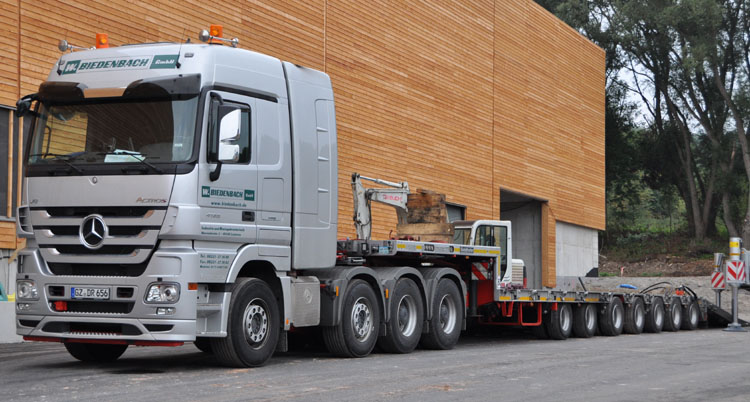 |
The crane is transported with this combination, a Mercedes Actros 4165 8x4 with a 7-axled Goldhofer semi-lowloader. This truck has it's own report.
|
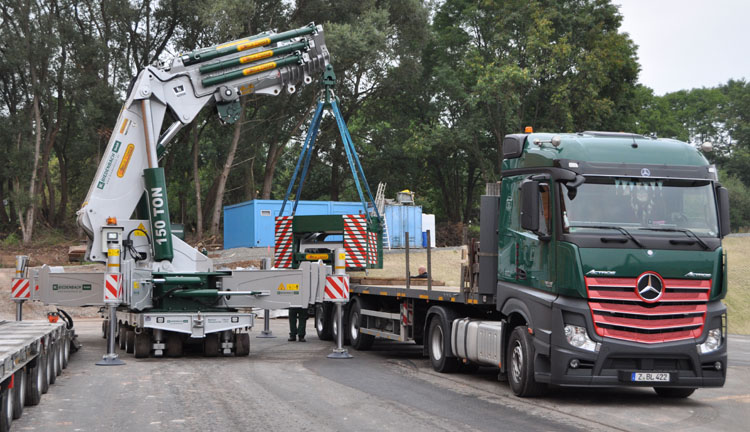 |
When I arrived at the scene, the was already unloaded and set up. By the way, Biedenbach named this crane WABI-K150. Here it is pictured while it is lifting it's own 19 tonnes of ballast, it got transported seperately with a new Actros 1845 and Nooteboom Teletrailer.
|
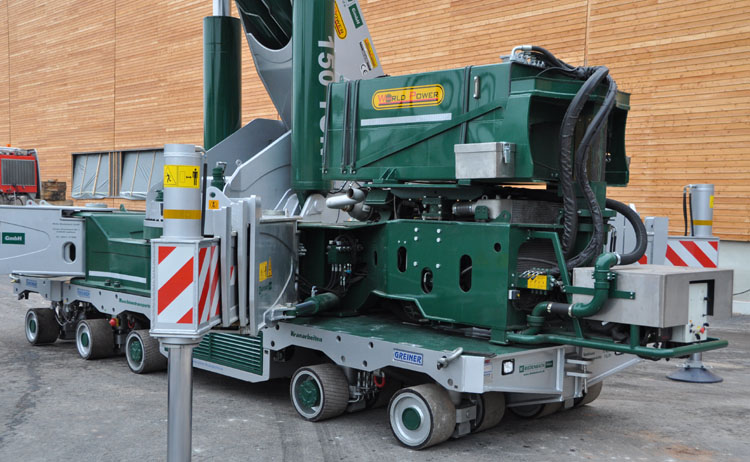 |
The crane was still in the compact mode, meaning the frame with tanks is standing above the powerpack.
|
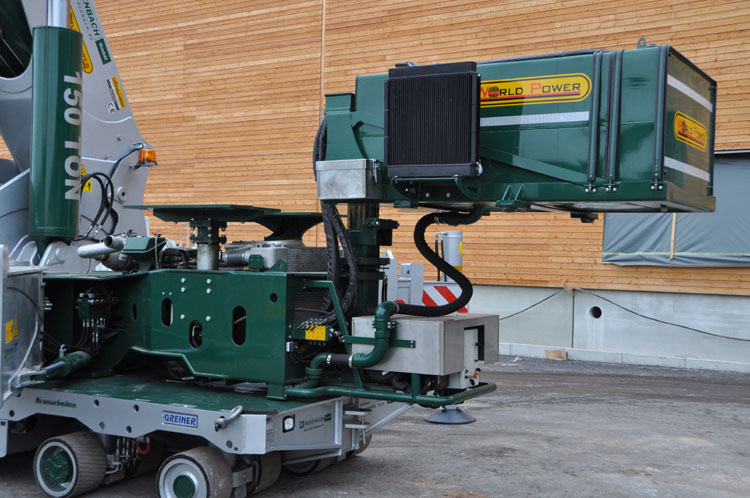 |
In order to put the ballast on the liftable table, the frame had to rotate to the front. This frame holds the oiltank, dieseltank, oilcooler and the batteries. The powerpack consists of a Deutz dieselengine and the oil pumps that drive the crane. The exhaust is equiped with a particle filter, necessary for indoor usage.
|
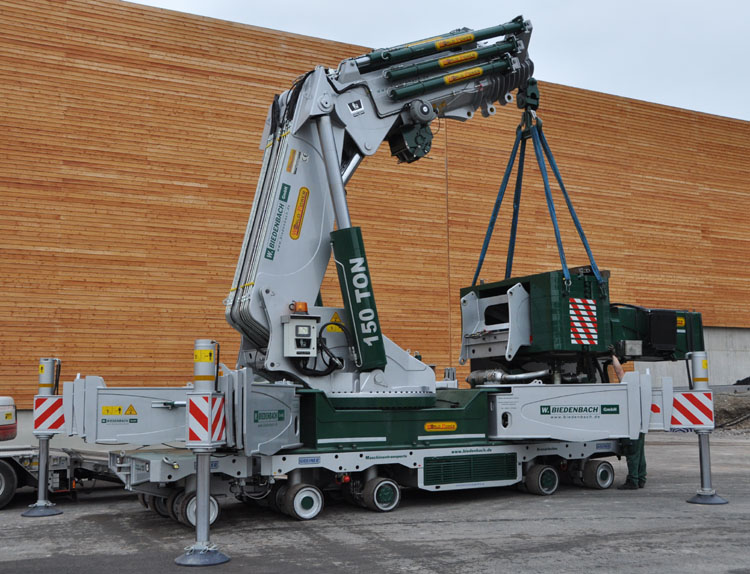 |
The ballast is put on the table. First thing to notice is the stability of the crane, these 19 tonnes are lifted easily with only very short outriggers. The own weight of all the crane parts are high enough to garanty the stability. The crane alone, so without the driving platform, weighs about 50 tonnes.
|
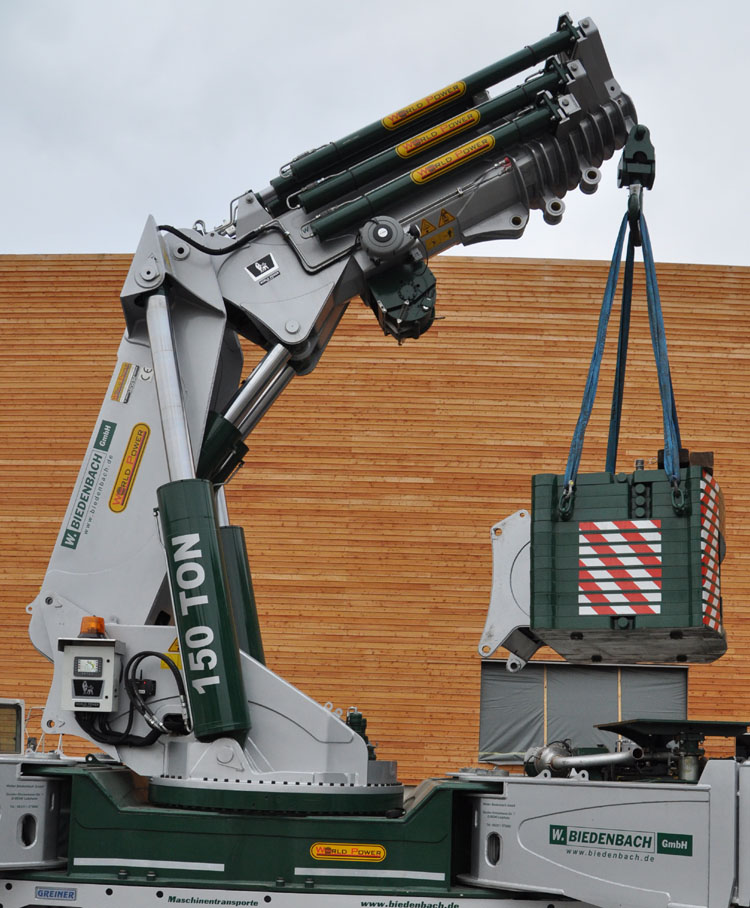 |
A better view at the crane, it's an Erking (nowadays known as Woldpower) ER-450.000 L-8. The lifting table of the crane is impressive, maximum load at 4,6 meters is 92 tonnes. With 1 extension out it reaches to 6,4 meter where it can still lift 72 tonnes, giving a capacity of 461 TxMtr! The crane extends 8x and reaches up to 22,3 meters where it will lift 13,3 tonnes. At the Bauma it was shown with a jib, it wasn't brought to this site.
|
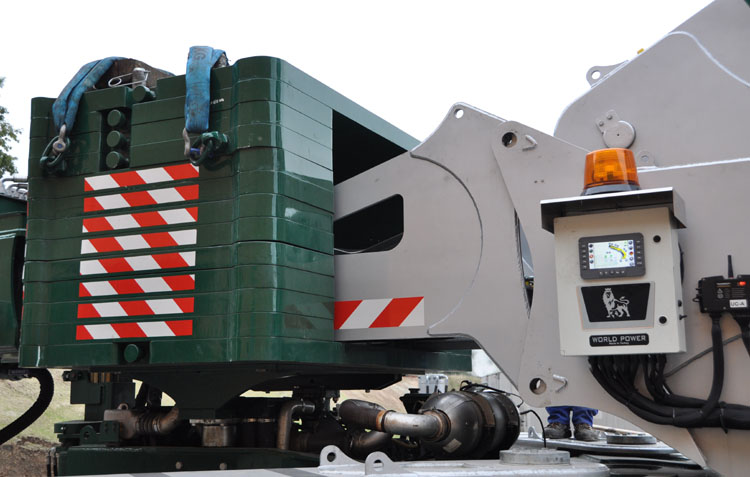 |
After the ballast has been put on the table, it is put on the right height and the frame that connects to the back of the crane extends. At the right we see the control unit of Worldpower, to the right beside that hangs the Scanreco reciever for the remote control.
|
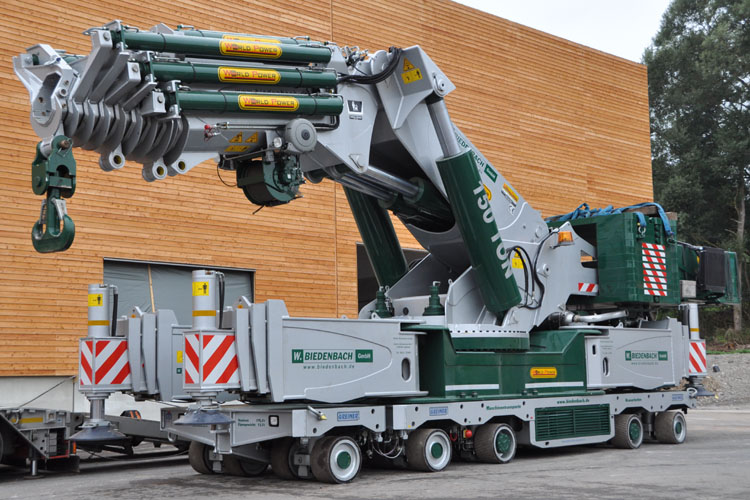 |
The ballast hangs, the outriggers are pulled up, now a total weight of 82,5 tonnes rolls to it's job. To operate the platform, a 2nd remote control is required, it operates the Greiner heavy transport platform. It's the model Sefiro 150.8 (8-axled) and the additional Sefiro 40.2 (2-axled). In total it has 5-axle lines with 10 axles. The platform is driven by 2 small dieselengine's that are mounted in the midle underneath the loading floor. The surrounding 4 axles are driven hydrostatically.
|
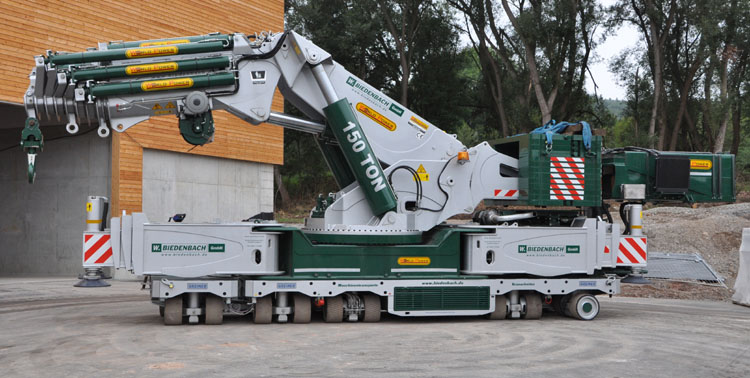 |
The Sefiro platforms are still new at Greiner, but also very interesting. These 5 axle lines ofer an impressive total weight of 190 tonnes, with 13,5 tonnes of own weight that leaves room for 176,5 tonnes of load. It's compact dimensions are ideal for indoor use, only 7,8 meter long and 2,25 meter wide. The loading height is 630 mm which can be increased by 220 mm with the hydraulical suspension. All axles are steerable seperately, this way it can manoeuvre in all possible ways as we see here. Here the platform rotates around 1 axle. The 2 axled part, the 40.2, can be taken off so that the platform is a bit smaller, but usualy it stays connected.
|
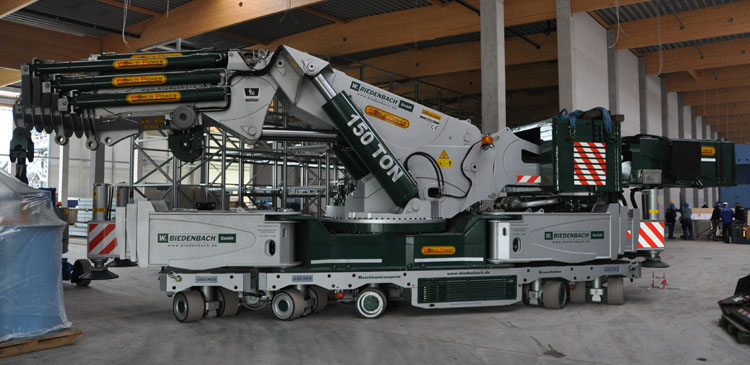 |
Driving through the hal, no problem with the flexible steering of the Greiner. The crane can be set down far enough to reach a min. height of 2,98 meters. With a total width of 2,29 meters it will fit through almost all doors.
|
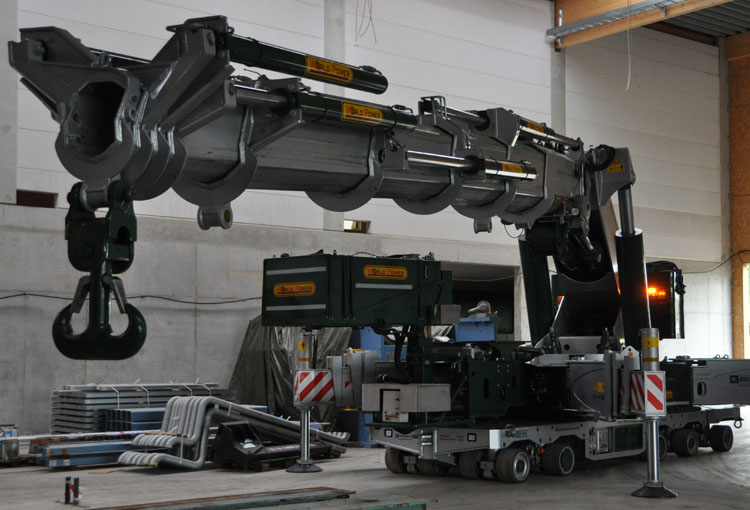 |
Here the crane extends to pick up some of the ropes. We see all the cylinders to extend the 8 boom parts, they have quit a large size.
|
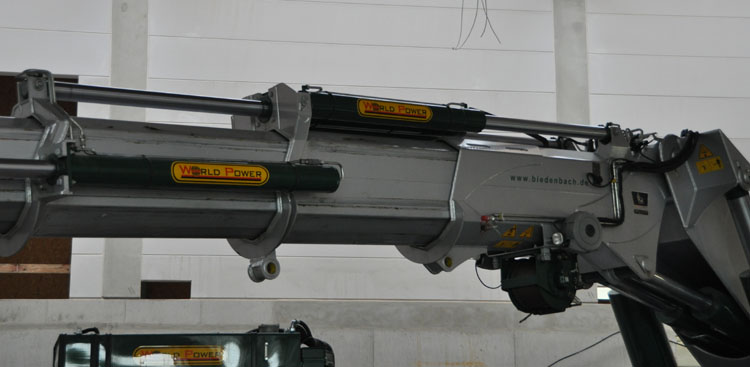 |
But for the 1st extending part that isn't enough, here they installed 2 cylinder. This crane can also, as with all knuckleboom cranes, extend under full load. Underneath the boom hangs a winch, it can pull 8 tonnes. With the right hook it is able to lift up to 56 tonnes with this winch.
|
 |
This was the first that I have seen a knuckleboom that had his support plates brought in by a forklift truck, it takes 2 men to lift one plate.
|
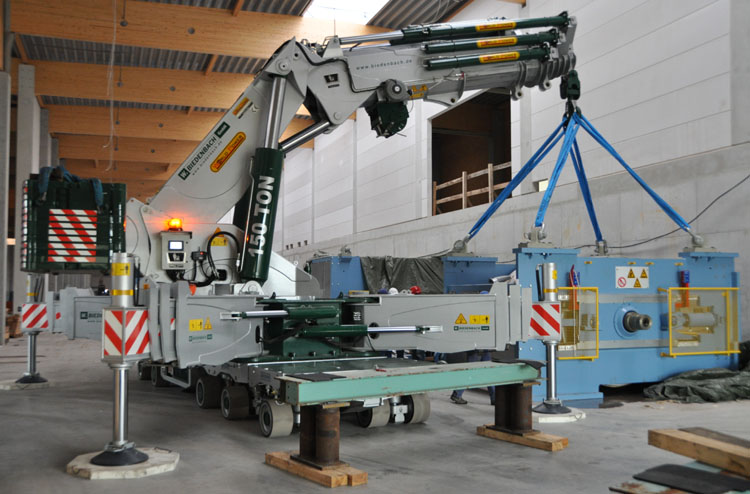 |
Now on the job it had to do. It is standing here in the new hal of a wood cutting company that has ordered a new press to fabricate long beams that are limed together. The whole press is rather long, at the end it will get a heavy roller unit. This is lower part of that unit, a piece that weighs about 30 tonnes.
|
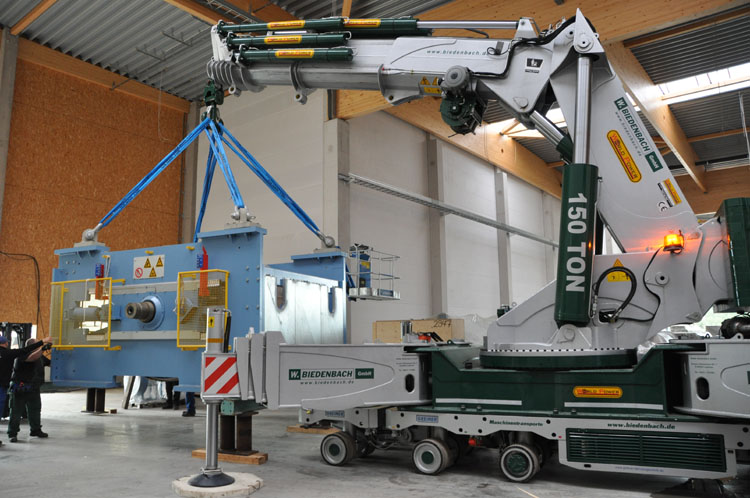 |
The part is lifted onto a set of supports. These supports have the correct height, so that afterwards the Greiner platform will fit underneath them. At this distance the load of 30 tonnes is an easy job for the crane.
|
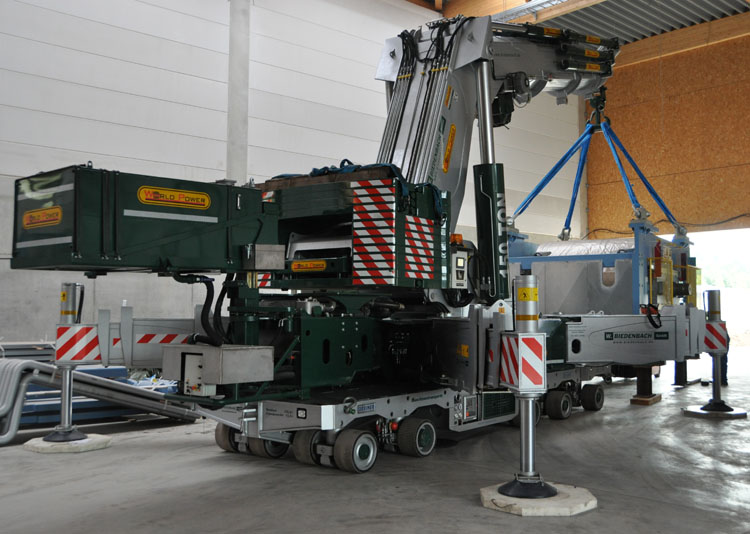 |
So at this distance it is enough for the crane to just put the outriggers down, extending them is not necessary. In this setup, meaning with ballast, the crane is so stable that it can also drive with a hanging load. Up till now they have moved loads of up to 20 tonnes that way.
|
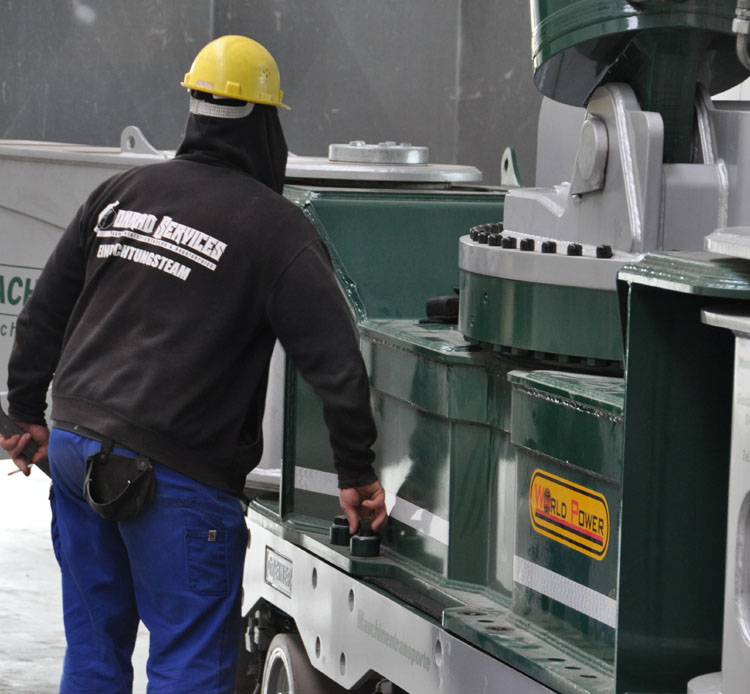 |
Now the crane is being prepared for the real lift. To avoid that the bolts have to losened at the tight spot, they are already taken out before the crane goes there.
|
| |
|